
Speyeria, commonly known as greater fritillaries, is a genus of butterflies in the family Nymphalidae commonly found in North America, Europe, and Asia. Some authors used to consider this taxon a subgenus of Argynnis, but it has been reestablished as a separate genus in 2017.
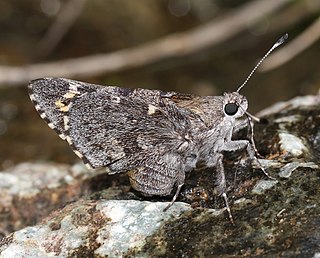
Agathymus aryxna, the Arizona giant skipper, is a butterfly in the family Hesperiidae described by Harrison Gray Dyar Jr. in 1905. Its range includes Central and North America.
Hesperia attalus, the dotted skipper, is a butterfly in the family Hesperiidae (skippers). It was described by William Henry Edwards in 1871 and is found in North America.
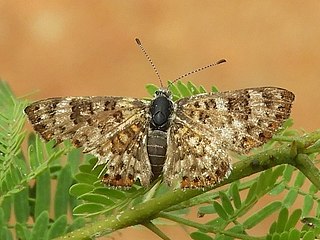
Apodemia walkeri, commonly known as Walker's metalmark, is a species of butterfly in the family Riodinidae (metalmarks), in the superfamily Papilionoidea. The species was described by Frederick DuCane Godman and Osbert Salvin in 1886. It is found from north-western Costa Rica north through Mexico. It is an occasional visitor to the lower Rio Grande Valley in southern Texas. The habitat consists of subtropical scrubs and forests.
Sphingicampa bisecta, the bisected honey locust moth, is a species of moth in the family Saturniidae. The species was described by Joseph Albert Lintner in 1879. It is found in North America.
Automeris randa, Rand's eyed silk moth, is a species of buck and io moths in the family Saturniidae. It was described by Herbert Druce in 1894 and is found in Central and North America.
Amblyscirtes linda, or Linda's roadside skipper, is a species of grass skipper in the family Hesperiidae. It was described by Hugh Avery Freeman in 1943 and is found in North America.

Emesiini is a tribe of metalmark butterflies in the family Riodinidae. There are at least 2 genera and about 15 described species in Emesiini.

Eunica monima, the dingy purplewing, is a species of tropical brushfoot in the family Nymphalidae, and was described by Caspar Stoll in 1782. It is found in North America.
Atrytonopsis pittacus, the white-barred skipper, is a species of grass skipper in the family Hesperiidae. It was described by William Henry Edwards in 1882 and is found in Central and North America.
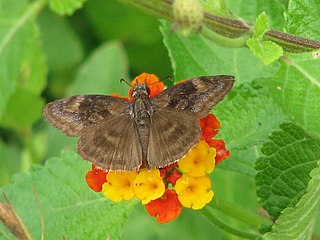
Gesta invisus, the false duskywing, is a species of spread-wing skipper in the family Hesperiidae. It was described by Arthur Gardiner Butler and Herbert Druce in 1872 and is found in Central and North America.

Lon taxiles, the taxiles skipper, is a species of grass skipper in the family Hesperiidae. It is found in Central America and North America.

Chlosyne definita, known generally as the definite patch or definite checkerspot, is a species of checkerspot in the family Nymphalidae. It is found in North America.
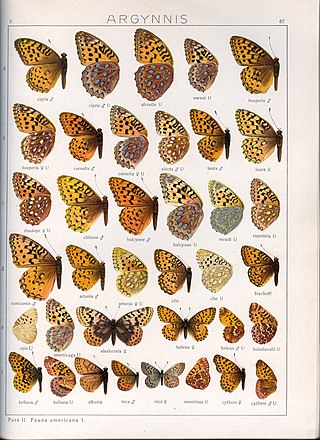
Boloria alaskensis, the mountain fritillary or Alaskan fritillary, is a species of fritillary butterfly in the family Nymphalidae. It was described by William Jacob Holland in 1900 and is found in North America and North European Russia. The MONA or Hodges number for Boloria alaskensis is 4462. The larvae feed on false bistort and alpine smartweed.
Oxydia cubana, the Cuban spanworm moth, is a species of geometrid moth in the family Geometridae. It is found in the Caribbean and North America.

Digrammia curvata, the shaded granite, is a species of geometrid moth in the family Geometridae. It is found in Central America and North America.
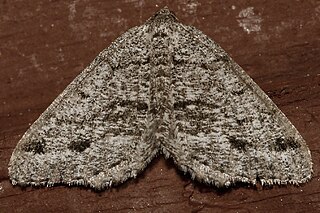
Speranza decorata, the decorated granite, is a species of geometrid moth in the family Geometridae. It is found in North America.
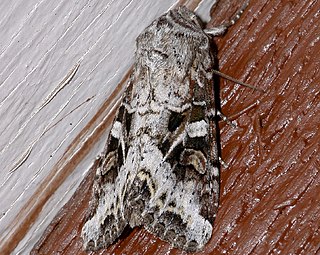
Trichordestra liquida is a species of cutworm or dart moth in the family Noctuidae. It is found in North America.
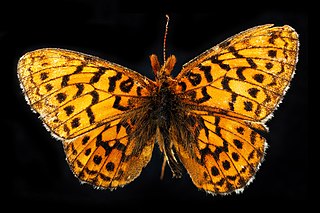
Boloria kriemhild, the relict fritillary, is a species of fritillary butterfly in the family Nymphalidae. It is found in North America.

Speyeria nokomis, the nokomis fritillary, is a species of fritillary in the family of butterflies known as Nymphalidae. It is found in North America.













